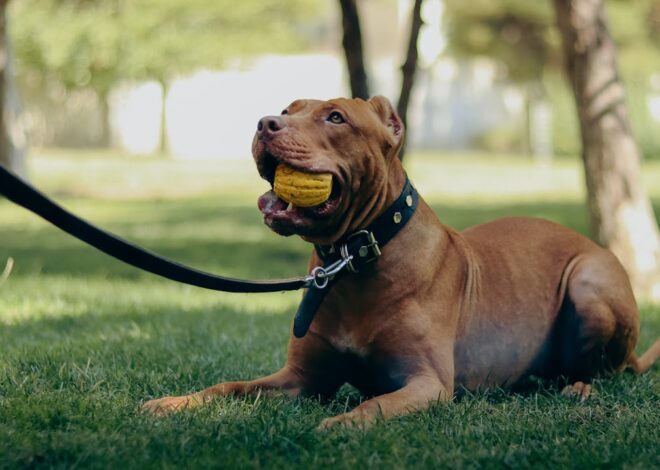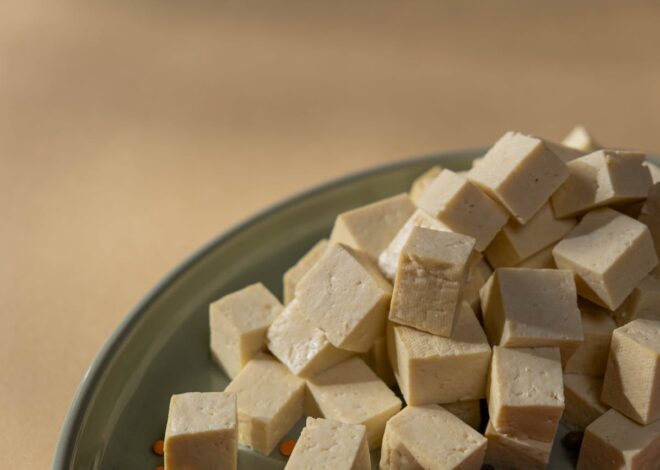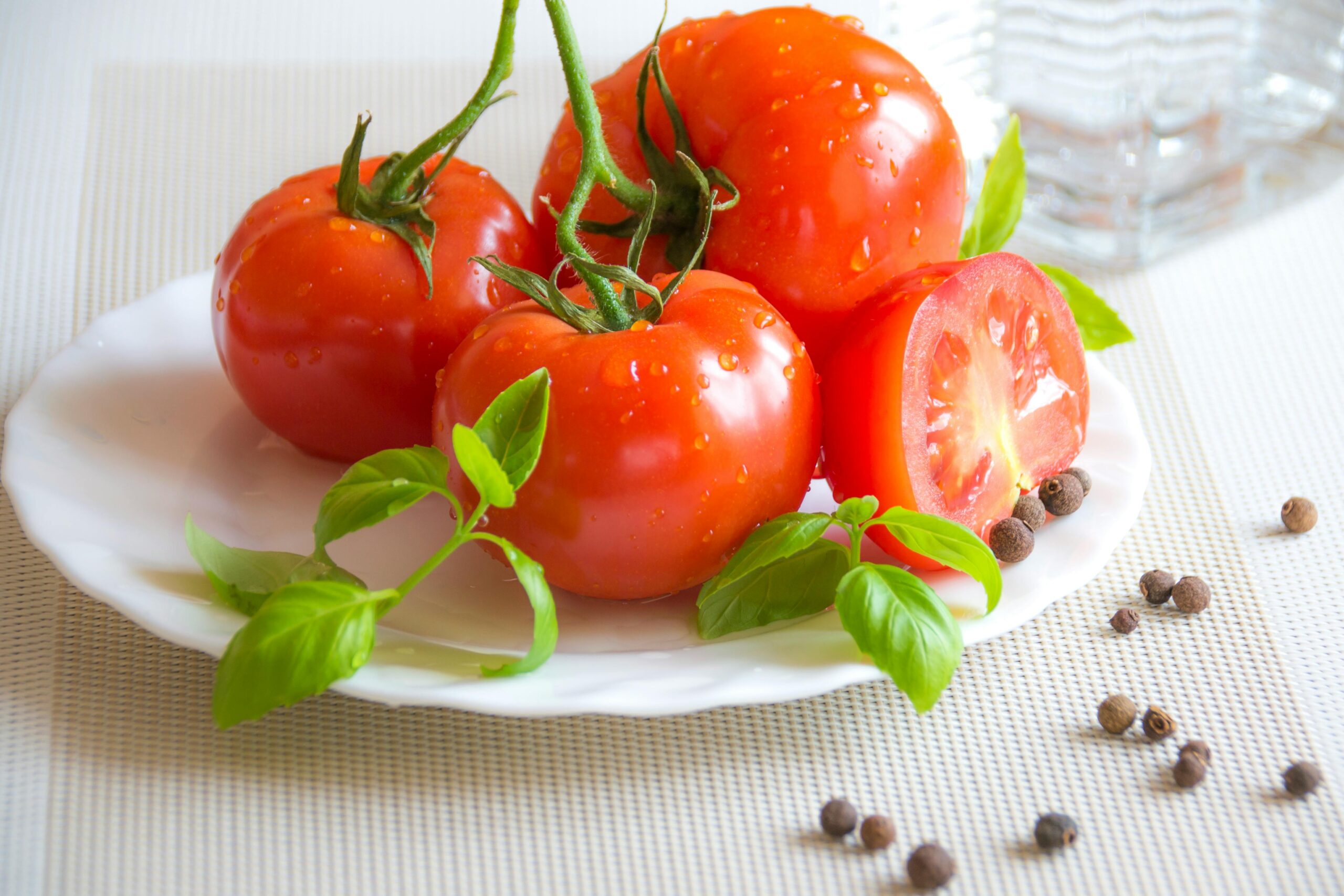
Can Dogs Eat Tomatoes Safely?
Understanding the Risks of Dogs Eating Tomatoes
Table of Contents
- 1 Understanding the Risks of Dogs Eating Tomatoes
- 1.1 Can dogs eat tomatoes? Your queries answered.
- 1.2 The Tomato Debate: Can Dogs Eat Tomatoes?
- 1.3 What This Means for Dogs?
- 1.4 Safety of Feeding Tomatoes to Dogs
- 1.5 Recognizing and Responding to Tomato-Related Problems in Dogs
- 1.6 Feeding Dogs Tomatoes: Benefits and Portion Control
- 1.7 Conclusion: Analyzing the pros and cons
Are tomatoes safe to eat for dogs? Green tomatoes can be dangerous, ripe tomatoes offer health benefits, and a small dose keeps your pup healthy and happy. Learn more right here.
Can dogs eat tomatoes? Your queries answered.
As a dog owner, you may be wondering if it is still safe to share your food with your furry friend. A question frequently asked is: “Can dogs eat tomatoes?”
Many people consume tomatoes from the diet; are they safe for dogs?
This article covers the health risks and benefits of tomato feeding for dogs thoroughly. We shall investigate the effects of the various types of tomatoes on canine health.
From cherry tomatoes, cooked tomatoes, to tomato sauce, we’ve got you covered. There will also be discussion on the signs of tomato poisoning dogs might exhibit, along with instructions on what to do in case your dog has consumed a tomato plant.
By the end of this article, you will be ready to make an informed decision about introducing tomatoes into your dog’s diet.
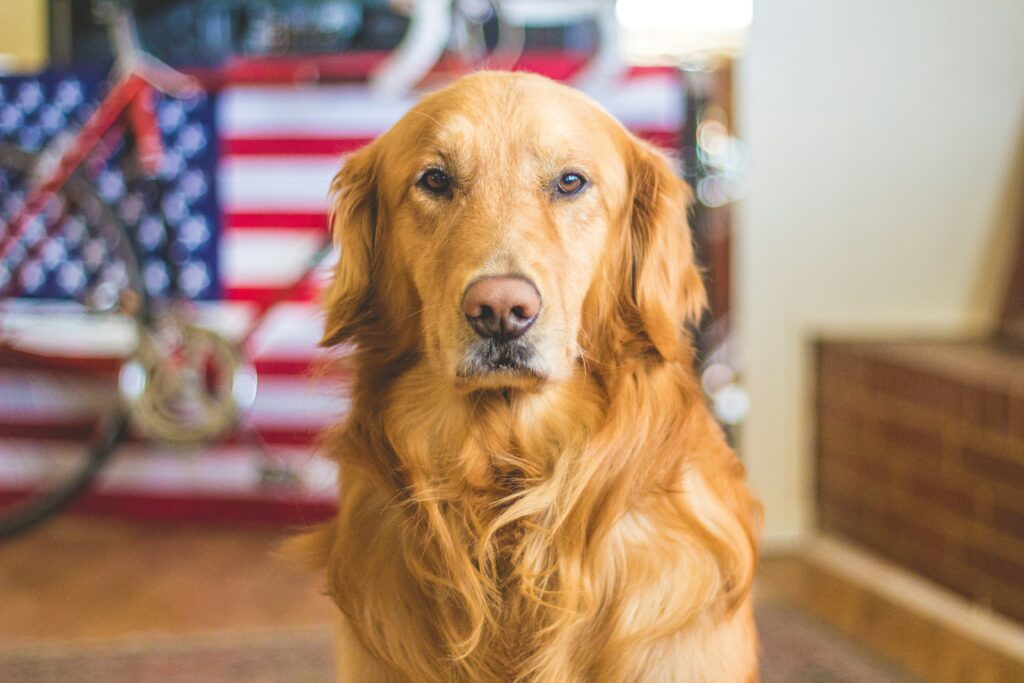
Let’s delve right in!
The Tomato Debate: Can Dogs Eat Tomatoes?
The debate about feeding dogs tomatoes revolves around the risks and advantages. Tomatoes belong to the nightshade family, which includes plants that can be harmful when consumed in larger quantities. However, ripe tomatoes generally contain an insignificant level of toxins that make them relatively safe for dogs, particularly when moderately given.
There are many things to consider when deciding if your dog can eat tomatoes; the content of solanine in ripe tomatoes is considerably less dangerous.
Avoid the green portions of tomato plants. Those, according to reports, include solanine and tomatine that could be harmful.
While some dogs enjoy eating tomatoes, each dog responds differently to food. Such decisions should be made accordingly, depending on the dog’s size, health, and nutritional requirements. Most importantly is moderation.
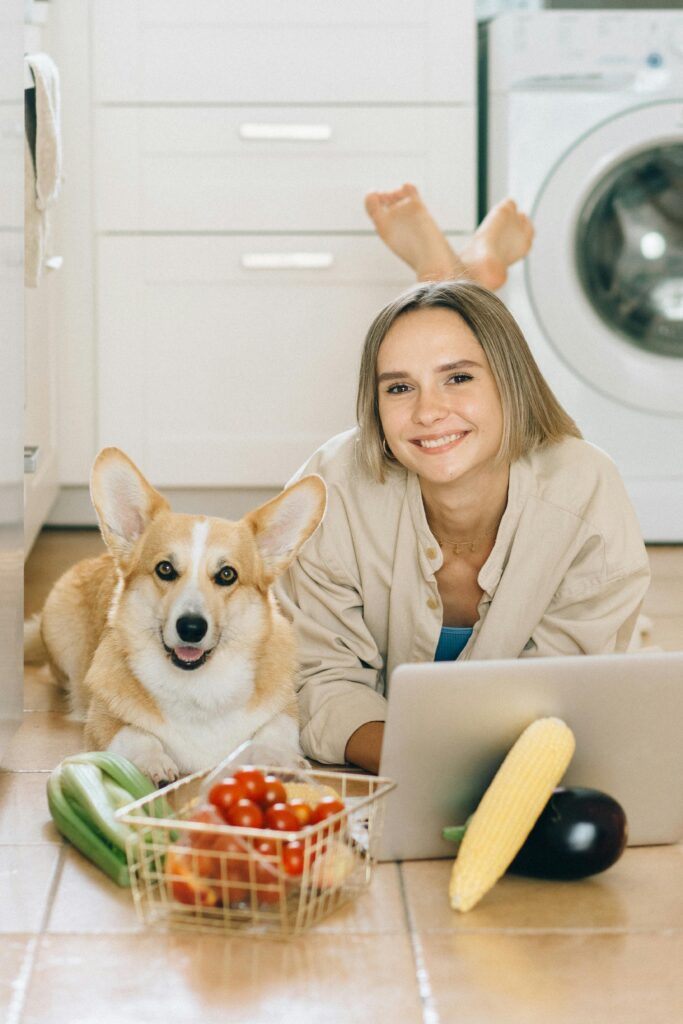
That’s good to remember:
- Ripe tomatoes are less dangerous than others.
- Avoid feeding stems and leaves.
- Be observed during and after the feeding of tomatoes.
What This Means for Dogs?
Because they can contain a toxin, solanine, tomatoes themselves pose a danger to dogs. This ingredient found in parts of the tomato plant can cause health problems for a dog when consumed in very large quantities. Symptoms of solanine poisoning can include general gastrointestinal upset, vomiting, and diarrhea.
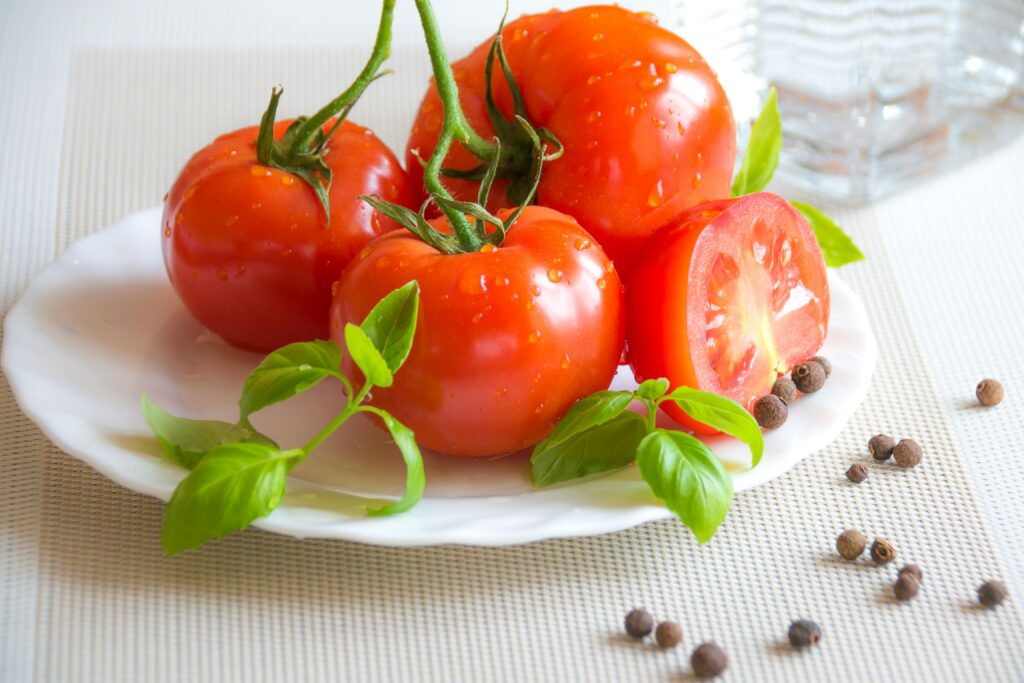
Unripe tomatoes and the plant itself contain a much higher level of solanine than do ripe fruits. The aforementioned will also generally lead to conditions of lethargy, an inability to walk without wobbling, and some forms of weakness in the dog. Noticing these few signs early and acting accordingly is critical.
Cherry tomatoes are another choking hazard, so please always cut them into small pieces if you decide to serve them. Sun-dried tomatoes contain lots of sodium, which may be unhealthy for dogs.
The common concern with tomato sauce is that it usually contains harmful additives like garlic and onions. There may also be more risks associated with giving dogs tomatoes if they should ever have anything other than raw, ripe, and plain.
Should always remove the seeds and skins to avoid any problems. Start with a small piece of tomato and ensure its tolerance. If your dog has consumed too much of various parts of the tomato plant, take him to the veterinarian immediately.
Safety of Feeding Tomatoes to Dogs
Dogs can be fed tomatoes safely, granted the following instructions are followed accurately. Introduce tomatoes in small amounts and observe your dog’s acceptance. Make sure your tomatoes are ripe, red, and free from green, as their green parts contain a harmful chemical compound dangerous to them.
Be sure to wash the tomatoes thoroughly unless you are able to know more about them. Realize that the seeds or skins of tomatoes must be removed because they may impede the normal digestion of your dog.
Here is a step-by-step guide to safe feeding:
- Choose ripe tomatoes.
- Wash, then remove seeds and skins.
- Cut into small, bite-sized pieces.
- Introduce small quantities and watch closely.
Cooking them is also an option, as cooking breaks down many of the troublesome compounds. Should always be plain with no seasoning or additives.
Certain products, like tomato sauces, hold ingredients that can be toxic to dogs. Portion control is paramount to avoid overfeeding and subsequent stomach upset.
Make sure tomatoes are only a minor part of your dog’s diet. Consult the vet regarding proper serving sizes considering that approach while taking into account the size of your dog itself and its health conditions. The priority should always be for a regular dog diet, not treats like tomatoes, wherein a balanced diet is needed.
Types of Tomatoes and Their Effects on Dogs
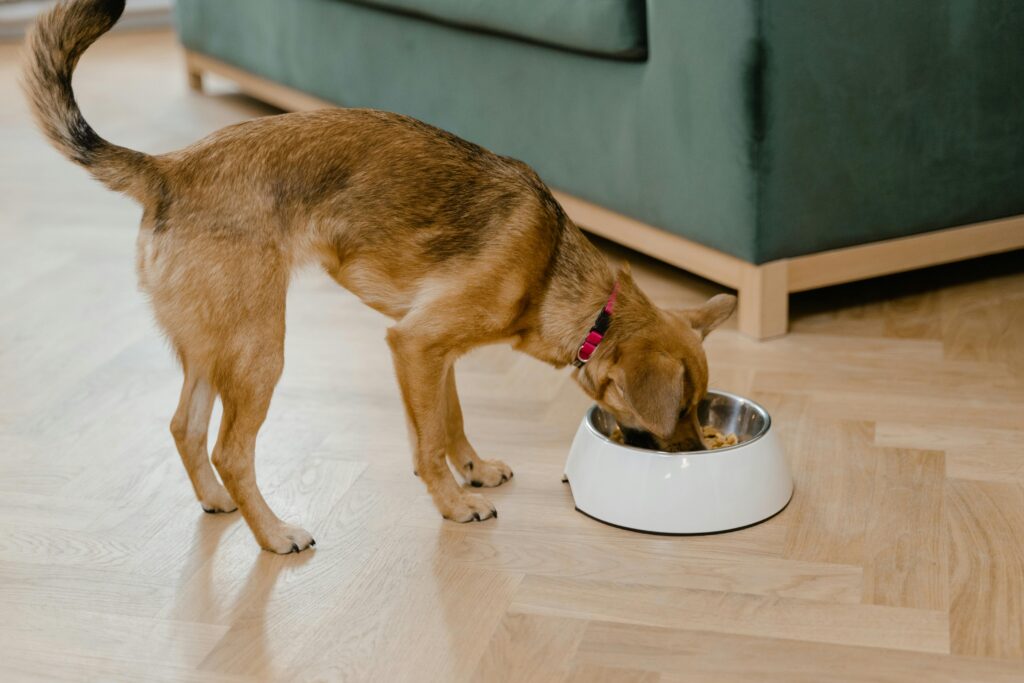
The different varieties of tomatoes may affect dogs differently. Ripe, fresh tomatoes are generally the safest choice; they can be a healthy treat from time to time, provided they aren’t fed in excessive amounts. The danger is in giving too much unripe tomatoes and the green parts of the plant because of the more concentrated levels of solanine.
Take care with the cherry tomatoes since they can be a choking hazard. Cooked tomatoes can also be safer and are easier to digest. Sun-dried tomatoes have high sodium levels that can be detrimental to dogs. Tomato sauce contains unhealthy ingredients for dogs, such as garlic and onions.
Can Dogs Eat Cherry Tomatoes?
Though cherry tomatoes can be fairly small and tempting, they can become a choking hazard. You should always cut them small before feeding them to your dog. They have the same benefits as regular tomatoes when ripe. Observe your dog erupt in reaction to cherry tomatoes as some may behave differently from others.
It’s best to introduce tomatoes just gradually and watch if any adverse effects occur. Portion control is essential so your dog wouldn’t get too much of it. Like all tomatoes, they have to be ripe and red. Moderation is always key so they don’t comprise a huge part of your dog’s diet.
Can dogs eat cooked tomatoes?
The answer is that cooked tomatoes can be a good option for dogs. Cooking usually destroys some of the bad components like solanine. You would need to ensure that they are prepared plain and unadulterated with anything. Garlic, onions and those kinds of spices that find a place in cooking are not good.
They should be introduced gradually so as to be able to monitor any adverse reactions that might follow. At the same time, tomatoes cooked do offer nutritional enhancement, too. They are usually more digestible for dogs. Ensure they form part of the balanced diet, which shouldn’t, however, replace the dog’s staple diet.
Should dogs eat sun-dried tomatoes?
Sun-dried tomatoes aren’t appropriate for canine consumption. These tomatoes very often contain high sodium content that can become toxic to dogs. That can lead in turn to all kinds of health problems, most notably hypertension. If you decide to offer your pooch sun-dried tomatoes, check the ingredients list for an absence of added salt.
Monitor them cautiously; start with very small amounts. Be very watchful, and keep track of any adverse reactions. Generally, fresh ripe tomatoes are a much safer and healthier option. Priority should resume to be given to their regular dog food over these types of ‘treats.’
Tomato sauce can be risky; the common offenders are the compounds inside them. The additives of the sauce often are garlic, onion, and salt. All these can cause toxicity to dogs. Check food labels thoroughly in case you give tomato sauce to your dog. Most of the commercial tomato sauces are harmful to them.
To be on the safe side, better avoid the sauce. Additives can easily cause an upset stomach or other serious problems. Ordinary cooked tomatoes would be a far better option. They will give the benefits minus the bad extras. It is always better to err on the side of caution with processed tomato products.
Recognizing and Responding to Tomato-Related Problems in Dogs
It is important to know the signs of tomato-related problems in dogs; early detection can prevent further complications. Observe your dog’s behavior after eating tomatoes. Watch for any changes in his appetite, tiredness, or appetite depression.
Early response can change the divergence in the dog and the outcome. If you suspect anything in the direction of tomato toxicity, please call your vet without delay.
Avoiding any exposure to the tomato plant as well is greatly important. Guardian will always be knowledge and vigilance in the line of protecting one’s pet.
Symptoms of Tomato Toxicity in Dogs
When dogs consume excessive amounts of the tomato plant material, they may develop varying symptoms depending on the amount consumed and what was consumed on the plant. Frequent signs to look out for include:
- Gastrointestinal upset
- Vomiting and diarrhea
- Lethargy or unusual drowsiness
- Weakness or lack of coordination
Your dog might look lazier than usual. They can also have trouble walking or standing. Abdominal distress is a common reaction to solanine poisoning.
Some dogs may display strange behavior. Look for things like fidgeting or confusion. A vet visit is recommended as soon as any of these symptoms appear. Immediate treatment could avoid more severe health dangers.
What to Do If Your Dog Eats a Tomato Plant
If your dog eats tomato plant parts, instigate swift action. First off, remove the plant from your dog’s reach. Don’t try to induce vomiting unless instructed otherwise by a professional.
Call the vet right away for advice. Provide as much detail as possible, such as how much was ingested and any symptoms that are observed. Your vet may recommend home observation or may ask that you come in right away.
Time is everything when potential poisoning by a plant arises. Stay calm. Take a deep breath. Follow the advice given by your vet very carefully. In these cases, the most important steps can indeed make a valuable difference.
Feeding Dogs Tomatoes: Benefits and Portion Control
Tomatoes will be beneficial to dogs, providing them with certain health benefits. High in vitamins, tomatoes support different functions of the body. The vitamins A, C, and K are present.
But moderated feeding is important. Overfeeding may lead to stomach upset. So moderation is important to avoid side effects.
Their intake should be gradually introduced. Keep an eye on them once you start serving them. You must peel and remove the seeds before serving.
A veterinary doctor can provide a safe guideline on your dog’s diet. Tailor the decision to individual needs for optimum welfare; feed tomatoes as a treat and not a part of everyday meals.
Health Benefits of Tomatoes for Dogs
Tomatoes are nutrient-rich fruits. Their licopene content in animals supports heart health. Lycopene is also involved in the lower degree of inflammation.
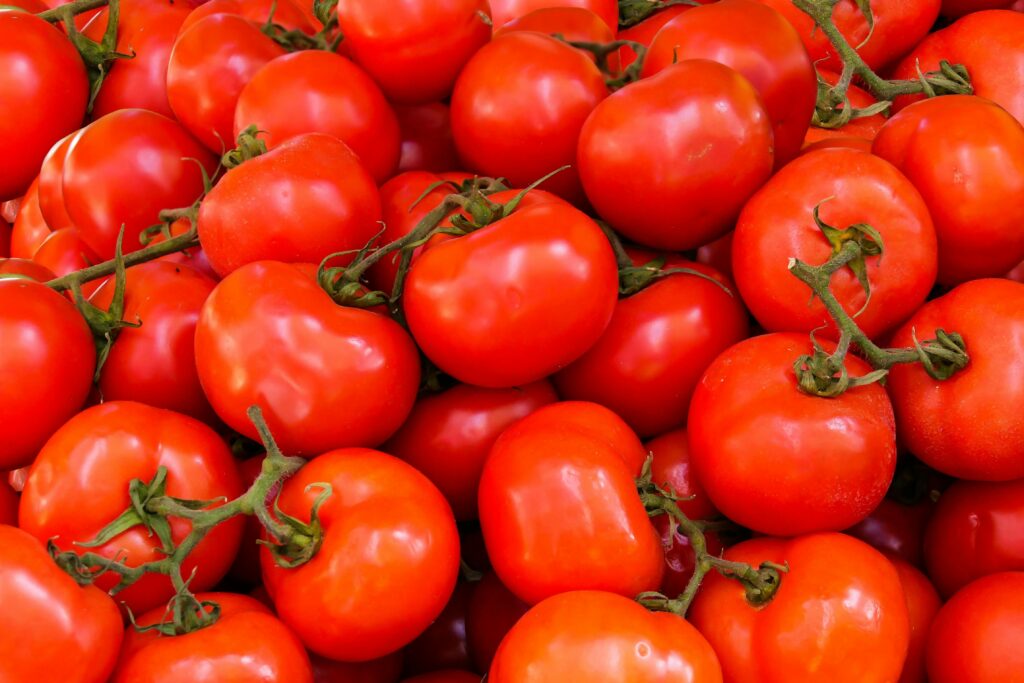
Also, tomatoes are high in dietary fiber. This can foster regenerative health. Dogs will have a healthier gut.
In order to not mess things up, make sure that you give all sorts of punishments after giving tomatoes as someone who’s not your dog. Depending on how much time you have, the real tests can vary greatly.
In case you might want to just feed tomatoes as an occasional treat, make sure your dog has received high-quality nutrition and products. When it comes to finding the deals on premium dog food and treats, discounts come in handy, varying from retailers and materials, an example being Zooplus through individual stores that make giving your furry friend the very best costing friendly.
Vitamin C boosts immune defenses. Essential for general health, vitamin C is especially necessary for growth and tissue repair.
A small piece of prepared tomato can be good dog treats. Reduce risks further by selecting ripe and organic tomatoes. The benefits can be huge, if given right.
- Fiber promotes digestion.
- Lycopene supports heart and skin.
- Vitamin C helps in boosting immunity.
By serving them plain, the safety gets guaranteed. Keep it simple and reap the benefits of a smart feeding process.
What is the safe tomato portion for dogs?
It is important to get the right portion: smaller for the little ones; bigger for large breeds. A few small pieces are usually enough.
Seeds and skin must be removed. This negates choking risks as well as digestion risks. Uncooked parts irritate a dog’s stomach.
Remember, it must not be a daily treat. They are meant to complement a varied diet; offer every once in a while to avoid too much.
After this is done, observe its reaction. Each dog varies with tolerance levels. Talk with the vet for the particular portion.
Underneath the management, whoever portions wisely knows the health benefits this brings. With moderation, there are no unwanted side effects. First should come the dog’s health and happiness.
Conclusion: Analyzing the pros and cons
When fed safely, tomatoes can give health benefits to dogs. Important nutrients like vitamins and antioxidants provide health advantages; however, possible risks such as solanine poisoning should be kept in mind.
It is wise to give your dog tomatoes in moderation, only in ripe and properly prepared forms, and you must be mindful of the cherry and sundried tomato variety. You should also be careful with how you consider your dog’s health needs.
By being aware of the good and the bad, one can have informed decisions. Thus, tomatoes can, from time to time, be included occasionally to breathe some life into your dog’s meal plan. A native record for health and happiness superiority is balance.
When to Get Your Vet Involved
It’s always best to ask your vet before introducing new foods. If after consumption of tomatoes, some unusual symptoms have developed, go to your vet. Any advice from an expert would safely, ethically, and humanely protect your dog.
